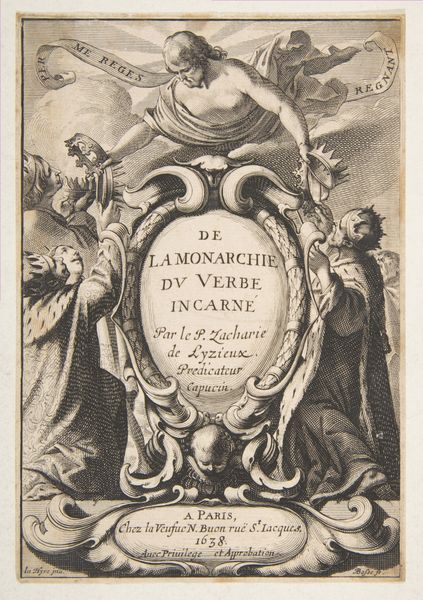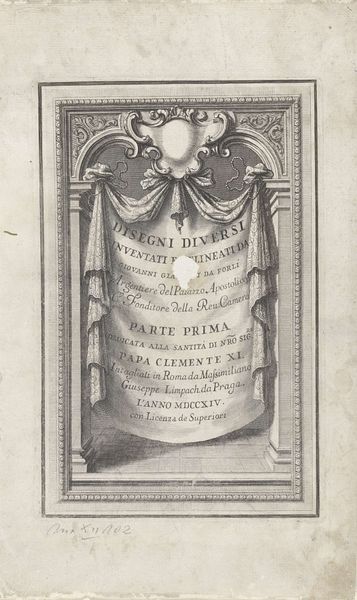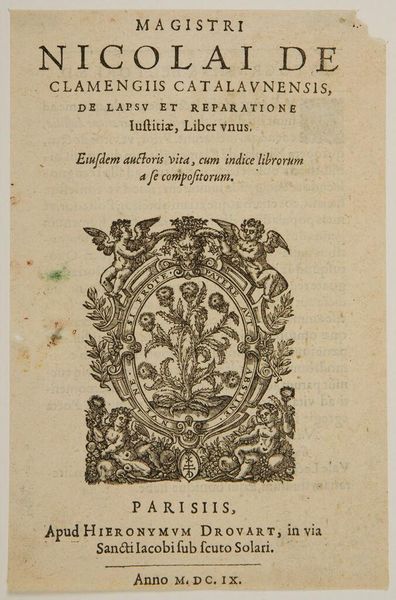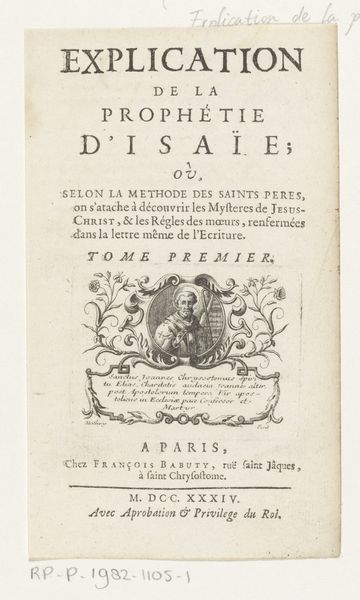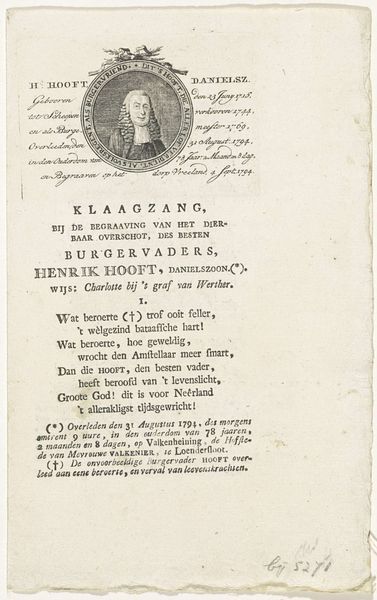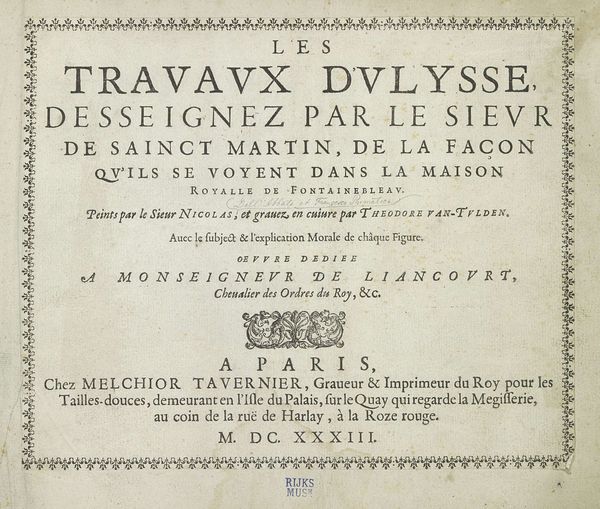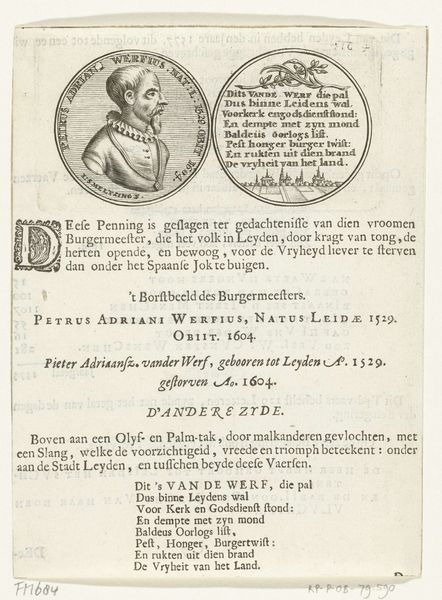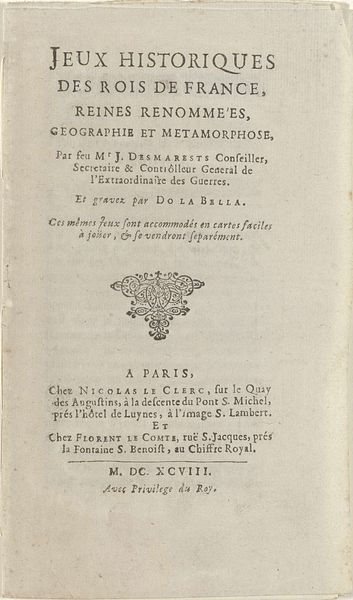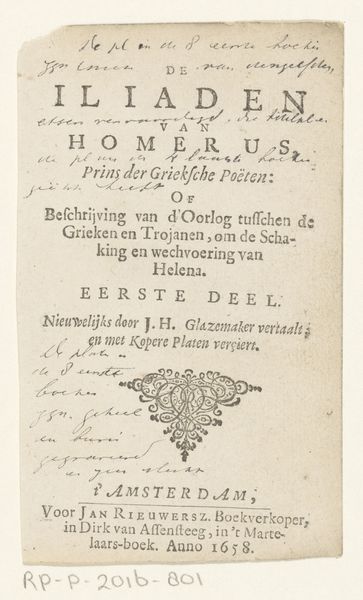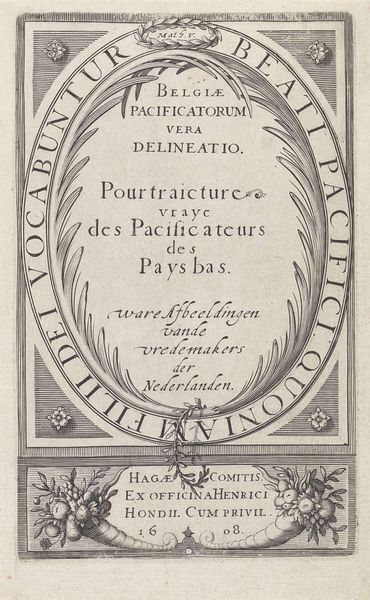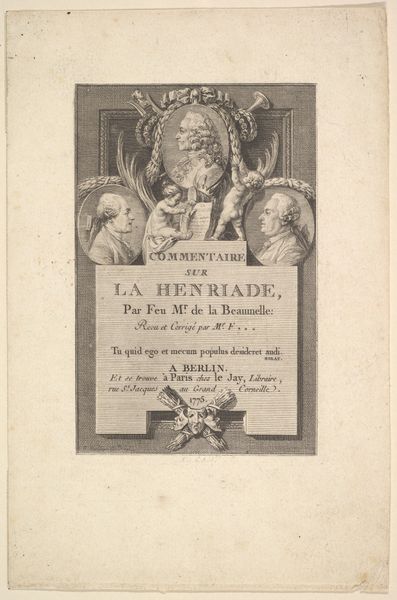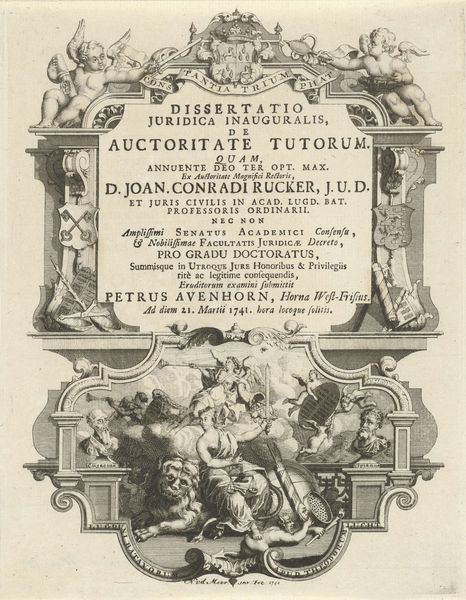
graphic-art, print, paper, engraving
#
graphic-art
#
baroque
# print
#
paper
#
history-painting
#
engraving
Dimensions: height 88 mm, width 68 mm
Copyright: Rijks Museum: Open Domain
This is ‘Wit doek met twee putti’, made in 1672, an etching by Albert Flamen. The stark contrast between the black ink and the untouched white of the paper immediately defines the structure of the image. The composition centres around a draped cloth, seemingly held aloft by two ‘putti’, or cherubic figures, though only their hands are visible. This creates an almost theatrical presentation of the text inscribed upon the cloth. The meticulous lines give texture to the fabric, contrasting with the smooth, empty space around the text. Consider how the artist plays with the semiotic functions of the curtain, acting as a signifier that frames and reveals but also conceals and obscures. This tension is further emphasized by the direct textual address. Flamen engages with the power of representation itself, inviting us to question the interplay between what is shown and what remains hidden. The use of line and space challenges conventional perspective, compelling us to reassess how meaning is constructed through art. The work isn’t simply an aesthetic object but also a structural exploration into the processes of visibility and knowledge itself.
Comments
No comments
Be the first to comment and join the conversation on the ultimate creative platform.
